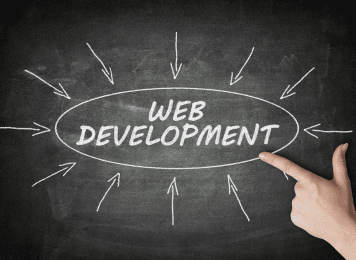MVP development
Web development
Product strategy
Agile development
Discovery phase
Performance optimization
Data analytics
How MVPs Boost Startup Growth in Website Development Services
Iliya Timohin
2024-11-08
For startups in website development services, a Minimum Viable Product (MVP) serves as an essential tool for validating ideas and entering the market with a basic, functional version of a product. An MVP is designed to deliver just enough features to attract early users and gather feedback, helping startups understand if there’s genuine demand for their idea before committing extensive resources. By launching an MVP, startups can test product-market fit, reduce risks, and gain insights that inform the direction of further development, ultimately boosting their growth prospects.

Aligning MVP Development with Lean Startup Principles
The Lean Startup approach emphasizes efficiency and responsiveness to user feedback, making it a natural fit for MVP development. With Lean principles, startups in website development can focus on delivering core features that provide genuine value, minimizing wasteful efforts. This lean mindset allows startups to make data-driven decisions, refine their offerings based on user needs, and reduce initial costs. Iterating on the MVP based on real feedback means that each stage of development is targeted towards what users want, improving the likelihood of a product that will succeed in the marketplace.
Key Stages in MVP Development for Website Startups
- Define Core Functionality: The first step in MVP development is to identify the essential features that meet user needs. Startups should focus on the main problem the website is solving and avoid adding features that don’t directly support this objective.
- Set Objectives and Metrics: By establishing clear goals and metrics, startups can evaluate the MVP’s success and make informed decisions on future iterations. Common metrics might include user engagement, conversion rates, or customer feedback.
- Build and Launch the MVP: The MVP should be developed quickly, prioritizing functionality over perfection. This basic version allows startups to gather feedback from early adopters, which is invaluable for improvement.
- Gather Feedback and Iterate: Once the MVP is launched, gathering feedback is crucial. Listening to users and analyzing how they interact with the product helps identify areas for improvement.
- Measure Outcomes: Analyzing the results against initial objectives helps startups understand if their MVP meets expectations. This evaluation informs whether to continue development, pivot the approach, or return to the drawing board.
By following these stages, startups can streamline the MVP development process and stay focused on user needs, resulting in a more relevant product.
Using Agile Methodologies to Enhance MVP Efficiency in Web Development
Agile methodologies pair seamlessly with MVP development, especially for startups aiming to bring new web solutions to market. Practices like sprints and iterative feedback loops enable startups to make quick adjustments based on real-time feedback, ensuring the product remains aligned with user expectations. Agile sprints help teams break down MVP development into manageable tasks, promoting efficiency and allowing for rapid responses to changes in user needs or market conditions. Using Agile in web development also facilitates a culture of continuous improvement, helping startups quickly refine their MVP.
Scaling an MVP into a Full Web Product: A Roadmap for Startup Growth
Transitioning from an MVP to a full-scale product requires a strategic approach that builds upon the feedback and data collected during the MVP phase. Startups can scale their MVP by gradually introducing new features that align with user demand and enhance the product’s value. Here’s a roadmap for growth:
- Enhance Core Features: Start by refining the MVP’s core functionality based on initial feedback.
- Add New Features Gradually: Implement new features in stages, ensuring each aligns with the product’s main value proposition.
- Focus on Scalability and Performance: As user demand grows, enhancing the website’s performance and scalability will become essential for a smooth user experience.
- Optimize for Market Fit: Continue collecting user feedback and making adjustments to ensure the product remains relevant to target users.
- Prepare for Full Launch: Once the product has a robust set of features and is market-ready, prepare for a full-scale launch.
With this roadmap, startups can expand their MVP gradually, reducing risks and ensuring a smoother transition to a market-ready web product.

Conclusion
MVPs are invaluable for startups in website development, providing an efficient way to validate ideas, test product-market fit, and scale effectively. By integrating Lean and Agile principles, startups can focus on core functionality, reduce development costs, and adapt to user needs, ultimately building a scalable, valuable product. Following an MVP-driven approach allows startups to make data-driven decisions that drive growth, resulting in a robust web product that meets market demand.